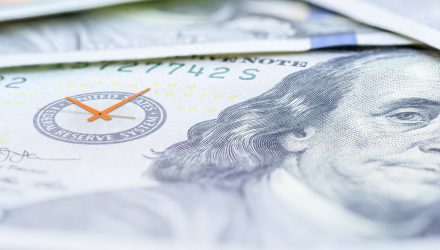Weaker economic data could be pushing investors back into the safe confines of the bond markets again. As such, benchmark Treasury yields are pushing higher amid the stock market volatility, potentially signaling a bond market comeback.
A CNBC report recently noted that the May reading of the S&P Global U.S. Flash Manufacturing PMI was 57.5, which was only a smidge higher than the Dow Jones forecast of 57.4. Additionally, the S&P Global U.S. Flash Services PMI came in at 53.5, which was under a consensus forecast of 55.
“Manufacturers and service providers signaled softer upturns in output amid elevated inflationary pressures, a further deterioration in supplier delivery times and weaker demand growth,” S&P Global said in a release.
Recently, talks of a recession amid rising consumer prices and rate hikes could be contributing to the slow growth forecasted. As mentioned, stock market volatility only adds to the wall of worry for investors, making bonds a potentially ideal option to consider once again after a rough going thus far in 2022.
2 Options to Get Bond Exposure
Investors who are ready to hop back in the bond market have options with exchange traded funds (ETFs). As opposed to building a bond portfolio using individual debt issues, ETFs can provide broad exposure depending on the investor’s specific scenario with respect to investment goals.
To get aggregate exposure to the bond markets, investors can consider the Vanguard Total Bond Market Index Fund ETF Shares (BND). BND, which comes with a low 0.03% expense ratio, presents bond investors with an all-encompassing, aggregate solution to getting U.S. bond exposure. It can be an ideal solution for investors seeking to complement their equities exposure.
For corporate bond exposure, in order to get more yield (albeit with more credit risk), investors can opt for the Vanguard Total Corporate Bond ETF ETF Shares (VTC). The fund seeks to track the performance of a broad, market-weighted corporate bond index.
The fund is a fund of funds, and it employs an indexing investment approach designed to track the performance of the Bloomberg U.S. Corporate Bond Index, which measures the investment-grade, fixed-rate, taxable corporate bond market. The fund also comes with a low expense ratio of 0.04%.
For more news, information, and strategy, visit the Fixed Income Channel.

